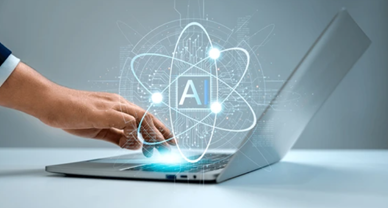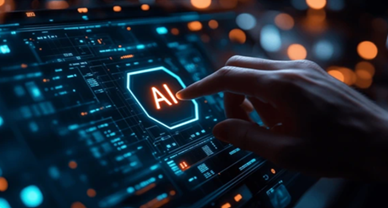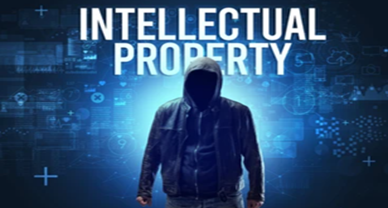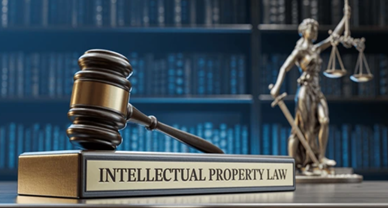Whose Work is it Anyway? Functionality and Authorship in the Age of Generative AI
Introduction
Imagine asking an OpenAI platform to write a full-fledged story about your own self, but in a parallel universe where you get to make all the choices that you were held back from making. The choice could be anything ranging from an unfulfilled desire to take your dream trip, to having the confidence to try out a new sport, or finally having the liberty to choose the career that aligns with your passion. The prompt would be somewhere on the lines of ‘Write a story set in a utopian universe, where I wake up with dreams and purpose rather than expectations and a pervasive sense of emptiness. The story unfolds around my life as a gourmet chef at Osteria Francescana. Tranquillity flows so naturally through me as I delicately garnish an elegantly composed carbonara. Design my character to be self-actualized, fearless, and resilient as I hike through the long and demanding trails of Trolltunga, with an uncertain feeling in my chest which soon goes away as I witness the ethereal and transcendent dance of the Northern Lights.’ Within seconds, you would be served with a story that consumes you with adventure, euphoria, and potential.
In today’s day and age where Generative AI (GenAI) is capable of creating exquisite content through human generated inputs, it is paramount to understand where AI generated works lie when it comes to copyright protection and the idea-expression dichotomy. Do prompts not carry an inherent sense of creativity? Where do functional works such as generative prompts find their place in the copyright spectrum which mainly values ‘expression’? The answers to these questions were vaguely answered in May 2025 by the expert panel constituted by the Ministry of Commerce and Industry, Government of India. The panel sought to analyse authorship and ownership in AI generated works and the spectrum of infringement upon storage of copyrighted material by GenAI. Nevertheless, India’s stance on GenAI and its impact on copyright remains largely evolving. Given this background, this article seeks to explore the grey area of the idea-expression dichotomy when it comes to addressing functional works, while rethinking authorship in the age of GenAI.
Idea-expression dichotomy through functionality lens
The idea-expression dichotomy is a long-standing doctrine in copyright law which evolved in the landmark case of R.G. Anand v. Deluxe Films[i]. This doctrine emphasizes on the core principle of copyright law, which is protection of expression over mere ideas. As ideas are abstract and can be common at large, this doctrine aids in identifying originality and works which are truly worthy of legal protection. The R.G. Anand case laid down a seven-point test to distinguish between idea and expression. The test suggested that mere ideas and facts are part of the public domain, what is protected is the expression of these ideas or the way a particular author chooses to elaborate the idea. Therefore, two different works may share the same idea and yet be non-infringing if the way of expression is significantly distinct.

In 2020 the Bombay High Court in the case of Shamoil Ahmad Khan v. Falguni Shah[ii] laid down yet another test to distinguish between unprotected idea and its protectable expression. The Court explained that an idea starts out as a small seed which gradually grows into a theme, storyline, and then a fully developed work with characters and creative settings. What makes this idea original and worthy of legal protection is the combination of these elements. If these creative elements are removed, what remains is a mere idea which is not protectable.
While the R.G. Anand and the Shamoil Ahmad cases established a clear distinction between idea and expression, this dichotomy becomes extremely blur when applied to works that are not purely expressive but also serve a functional purpose. In such cases, creativity and functionality often intersect, making it difficult to determine where the idea ends and its expression begins. This difficulty becomes increasingly evident when it comes to AI-prompts which are functional in nature but incorporate tremendous creativity. The time-tested dichotomy faces a challenge in determining whether generative prompts constitute authorship worthy of protection or merely serve a functional purpose, which is traditionally excluded by copyright law.
In a leading U.S. Supreme Court case of Baker v. Selden[iii] the idea-expression dichotomy was established in an articulate form, making it the earliest case to sharpen the doctrine. In this case, the Court held that a bookkeeping system explained in a book through text or illustration can be copyrighted, however, the ‘bookkeeping system’ (method described) itself cannot be protected by copyright. Decades later, copyright scholar Melville Nimmer interpreted this case and tried to fit it under the umbrella of idea-expression dichotomy. This interpretation was based on an unstated assumption that anything ‘printed’ is copyrightable. This conventional approach wrongly tried to make a functional method look like an expressive one, only because it was printed on paper. This very move, shifted the focus from what the Court was really talking about; functionality.[iv]
Real tension in copyright law arises when an expressive work directly translates into a practical task. This tension resurfaces today in the realm of GenAI prompts which are similar to a book explaining an accounting system. These prompts instruct a system to generate an output, hence designed to perform a function. However, their structure, phrasing and creative choices can also embody expression. The challenge today lies in determining whether generative prompts deserve copyright protection considering their creative articulation or do they merely resemble a functional command. In this sense, the centuries old debate of Baker v. Selden becomes relevant again as we grapple with the attempts to fit functional works such as generative prompts into a narrower spectrum of idea-expression.
Reassessing the functionality barrier
It is paramount to understand that functional works are inherently meant to perform a task and not to express something. Therefore, their value lies in ‘what they do’ not ‘what they say’. The idea-expression distinction makes sense for expressive works which are meant to ‘communicate’ content and their value lies in ‘how’ they communicate it. Even if we force the analogy on functional works, it becomes metaphoric and misleading. There is, however a special category of functional works which are incomplete without communication. The earliest example of such work is the Lotus 1-2-3 spreadsheet, designed in the 1980s for accounting and data analysis. The spreadsheet performed calculations while communicating with the user through interfaces such as commands and menu. Ultimately, the function of the spreadsheet was dependent upon how well it communicated.
The legal dispute pertaining to this software arose in the famous case of Lotus Development Corp. v. Borland International, Inc.[v] In this case, the Court held that functional elements like menu commands fall outside the purview of copyright protection, drawing a rigid line between function and expression. However, in today’s age GenAI challenges this prevailing principle of copyright law, which pushes function and expression into watertight compartments. From software, to user interfaces, and now generative prompts, copyright doctrines have been silent on works which incorporate human creativity through functional inputs. The Lotus dispute highlights the ingrained insufficiency of the idea-expression framework for evolving area of GenAI creativity.
Capitalizing Creativity: India’s stance on AI authorship
Creativity is a multi-dimensional concept, an idea becomes creative when it is novel, surprising, and valuable[vi]. The very reasoning behind copyright protection stems from the intention to exploit creative endeavours and incentivize creative thinking. On that note, it becomes essential to reevaluate traditional doctrinal principles. A study conducted by Department of Economics, University of California concluded that humans still outperform AI in sufficiently creative tasks; which were compared to three different versions of GPT[vii]. These findings are even more surprising since the experimental subjects were ordinary laboratory students who were not made aware of the experiment in advance. If a substitution between AI and humans is unlikely, our result points more in the direction of synergies, providing evidence in favour of the tremendous possibilities of successfully exploiting the complementarities between humans’ imagination, and AI’s accuracy and computational capabilities.[viii]
It is about time that our copyright laws operate along the lines of digital evolution. From carrying forward the conventional doctrines of idea-expression to narrow interpretation of copyright laws without principled explanation, the Indian copyright regime has not reached its fuller potential. An evident example of this is the ‘RAGHAV’ painting case, wherein Ankit Sahni, a lawyer and artist, sought copyright protection for his artwork titled ‘Suryast’. Mr Sahni himself developed the AI model ‘RAGHAV’ (a robust artificially intelligent graphics and art visualiser), which produced this artwork. The artwork was created by processing a digital photograph of a sunset captured by Mr Sahni with an image of Vincent van Gogh’s The Starry Night. The Indian Copyright Office registered Sahni as the author while acknowledging ‘RAGHAV’ as a co-author alongside a human. The Copyright Office later issued a withdrawal notice, mandating ‘human’ authorship for copyright protection. Although ‘Suryast’ remains ‘Registered’[ix], its final validity is uncertain considering future legal implications.
The threshold for originality in India was demonstrated in the case of Eastern Book Company v. D.B. Modak.[x] The Court employed the skill and judgement test which essentially means that originality stems from the author’s experience and the ability to make creative choices. This test suggests that originality must be assessed by the amount of intellectual effort taken by the author and the way creative choices are expressed, considering that the work is not purely mechanical. This prevailing standard lacks applicability when it comes to GenAI works which are mutually inclusive of judgement and creative effort but their functional nature complicates their status as ‘expression.’ India’s confinement to human intellect as the source of originality becomes blur when creativity is shared between human intention and AI generation. Consequently, the copyright regime must consider what it means to ‘originate’ a work in the age of ‘Digital Gods’.
Conclusion
The idea/expression formula has become so malleable and is applied in such widely varying contexts in copyright law that it is now commonly said only to indicate the outcome – whether or not the particular copying of a copyrighted work infringes – and not to provide a reason for it.[xi] As we move towards a more tech-driven society, GenAI works are going to increase by manifold and the current copyright regime must make amends to recognise the layered human involvement. Traditional doctrinal principles need to be reassessed in a way that addresses the grey area between idea-expression-function.
Copyright law started out as a protectable instrument for anything and everything that was printed, as seen in the Baker v. Selden case. It lacked purposeful planning or careful reasoning, as it prioritised commercial protection over moral rights. Over time it began to protect other works such as music and software, without actually considering the law’s purpose. The reasoning came much later after the protection was granted, to justify what had already happened. The result of this historical drift from policy rationale is evident today, as we struggle to apply these time-tested doctrines to something all the more unconventional.
India needs to expand its copyright protection through principle rather than inertia. Technology demands a new test focused on whether human creative choices shaped the final expression rather than who caused the work to be created. The amends must start small, by first focusing upon the purpose of protection; creativity, labour, or innovation. Legal reforms must be grounded in policy only then can we surpass the doctrinal history of copyright expansion. Until then we are stuck with the question ‘Whose work is it anyway?’
Author:– Nandita Kedar Kahate, in case of any queries please contact/write back to us atsupport@ipandlegalfilings.com or IP & Legal Filing.
[i] R.G. Anand v. Deluxe Films (1978) 4 SCC 118
[ii] Shamoil Ahmad Khan v. Falguni Shah, 2020 SCC OnLine Bom 665
[iii] Baker v. Selden, 101 U.S. 99 (1879)
[iv] L. L. Weinreb, Copyright for Functional Expression, 111 Harv. L. Rev. 1149 (1998)
[v] Lotus Development Corp. v. Borland International, Inc., 516 U.S. 233 (1996)
[vi] Margaret A. Boden, Creativity and Artificial Intelligence, 103 Artificial Intelligence 347 (1998)
[vii] Charness, Gary and Grieco, Daniela, Creativity and AI (January 6, 2024). Available at SSRN: https://ssrn.com/abstract=4686415
[viii] Id.
[ix] Work Title ‘Suryast’, ROC No. A-135120/2020, Diary No. 13646/2020-CO/A
[x] Eastern Book Company v. D.B. Modak, (2008) 1 SCC 1
[xi] Weinreb, supra note iv.


